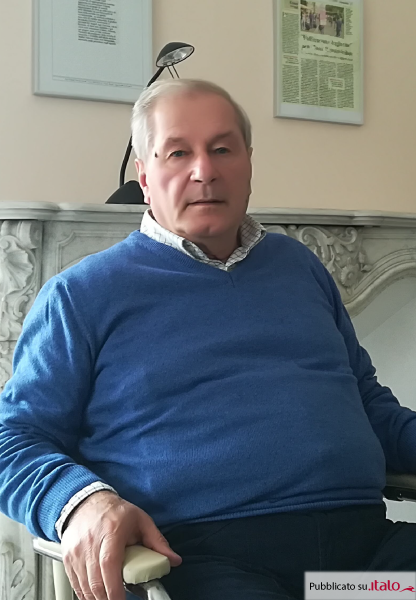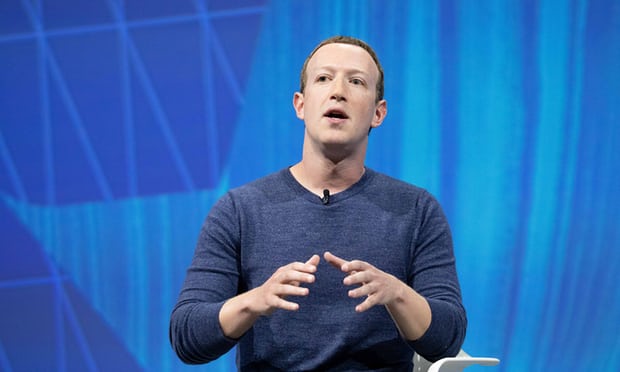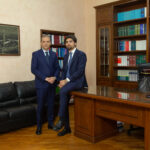It’s late 2001 and Crown Princess Masako of Japan is having a baby. Her husband, Crown Prince Naruhito, is heir to the Chrysanthemum Throne, the world’s oldest hereditary monarchy. Sinking into its fourth recession in a decade, Japan hungers for good news and hopes Masako might have a boy. The Imperial Household Law of 1947 decreed that only men could assume the throne as emperor.
The doubleness of the term “confinement” – imprisonment and childbirth – seems especially apt for Masako. Though she lives secluded in a palace, she is such an object of scrutiny that she may as well reside in a glass cube at the centre of Shibuya crossing.
Looking back now, I would have given birth on the Shibuya crossing if doing so would have changed the outcome for my baby.
People always ask me if there were any warning signs. But everything seemed fine. A few days before Christmas I’d gone to the obstetrician, who measured the baby’s position and heartbeat, and my vitals. I lay down with a band around my enormous middle for 20 minutes and left with reassurances that everything was as normal as it could be. Not long till the baby came now.
Later, in a taxi on the way to the airport to meet my sister and her son, the baby seemed to be going berserk in utero. Super-active, in the way that books said sometimes babies behaved when they were getting ready to be born. And the way I remember Isabella being before I went into labour with her. Looking back, though, I wonder if what I was feeling were convulsions.
I woke the next morning crushed by tiredness. I wanted to sleep for a thousand years. I could hardly move. And I hadn’t felt the baby move. I lay in bed waiting for one of the kicks, usually like clockwork, but there was nothing. It was odd. Adam, my husband, said before he went to work – as anyone in that situation would because it nearly always is – “Don’t worry, I’m sure it’s fine.” All I could do was go back to sleep. I woke mid-morning. Still nothing. My sister gave sensible advice: ring the obstetrician, go to the hospital, get reassured, and then let’s do whatever we are doing today with the kids. But it was going to be the day life as I knew it ended.
We sisters and our children headed off, geared up for a quick scan at the Mount Elizabeth hospital, in and out and on our way. I was shown into one of the ultrasound rooms, all very matter-of-fact. A nurse I’d met before drew the short straw. Gel, wand, belly. Here we go. Nothing. She smiled and said the baby must be asleep so she would try a different position. Nothing. No more smiling as she tried and tried, the wand pressing into my belly from every angle. I could see my baby on the screen. I heard that zhoosh-ing sound but not the chugga chugga chugga of the heartbeat. The nurse went to get help.
I lay there alone, alone with the baby inside me, desperate. “Please please please baby, please move. If you’re ever going to kick again, do it now.” All was still. So still, this baby I had felt grow for nine months, had loved and couldn’t wait to meet. This would be the moment to pray, I remember thinking, as tears ran down my cheeks.
My obstetrician appeared. They had told me she was away but here she was. I felt a flicker of hope now that the big guns were here. She could fix this. But when I saw her face and the glazed look of her offsider, hope receded. She tried to find a heartbeat but there was no heartbeat in my body but my own.
Anyone who has had a baby, or has watched a baby being born, knows that the gap between life and death narrows throughout labour. Sometimes the gap is as thin as a membrane. The mother is alive, the baby is alive, but will both emerge alive? When women say the pain is killing them, they don’t mean it metaphorically. Babies are rushed for tests within minutes of emerging into the world – will they make it? Women haemorrhage to death after giving birth. These things aren’t confined to pre-modern times or the developing world. It’s not for nothing that the standard phrase of the joyous birth announcement is “mother and baby are both well”. Because often they aren’t.
Death was in me. In shock, I could barely form thoughts. Someone handed me tissues. How could this be?
I had to call Adam. You can never predict where you will be when you get the worst news of your life. It was lunchtime and he was at a busy crossing on Orchard Road, about to grab a sandwich with colleagues. I told him bluntly, as I would tell my poor parents a few hours later. “The baby is dead.” I hope I prefaced it with, “Sit down, prepare yourself, I have bad news.” But how else to say it?
Usually when a person is felled by bad news they don’t have to get up and run a marathon. But the business of giving birth had to happen. I could choose my starting time. The doctor said we could let labour start naturally but it might take days. Or I could be induced. That night. That’s what we chose.
We went home to pack. I chose the only outfit my baby would ever wear from a cupboard full of tiny baby clothes.
Mum told me later, or told one of my siblings who told me, that she thought I was going to die. That never occurred to me but I was in such a state that if a giant crater had opened up and swallowed central Singapore I wouldn’t have been surprised. I might have stepped towards one of the fissures.
At the hospital they hooked me up to the drugs to induce labour. I sat up in bed and Adam and I watched Survivor. I remember thinking, through my hysteria, “I’ll show you a fucking survivor, you bandana-wearing, gruel-eating, mud-dwelling, wannabe-celebrity idiots. The tribe has spoken all right. I’ll vote you right off your island.”
On it went. The baby wouldn’t be born for 24 hours. Labour is long, whether your baby is alive or not. I ate winter melon soup served out of an actual winter melon. Hospital food is better in Singapore. Finally, they sent me to the labour ward. There was a band around my belly designed to measure my contractions and a baby’s heartbeat.
On the monitor you could see what was going on in all the other rooms of labouring women. Their babies all had heartbeats. They must have thought, “What the hell is going on in room six?” I would hear their babies crying when they were born.
Contractions kicked in on waves of pain. Some epidural magic meant I fell asleep. When I woke up there was a flurry because the baby was about to be born. I had to push. The baby emerged. It was Daniel. I didn’t know what to expect but he was perfect. I remember the doctor saying in her calm voice, he looks good, he has the right number of toes and fingers, he’s 3.5kg. The placenta looked OK. Everything about him was right. Except, in the most fundamental way of all, it wasn’t.
Then we were alone. The three of us. Adam and I held Daniel. We talked to him. His little lifeless body. But he was ours and we loved him. And then they took our son away. I don’t ever want to feel so sad again.
There was no social worker, no grief counsellor. Just us. That night, lying in my hospital bed with my husband next to me in a camp bed, my son somewhere in the hospital (in the morgue, I guess) and my daughter with her aunty and cousin in our apartment 500 metres away, my thoughts raced. They had offered me a sleeping tablet but for some reason I refused, thinking I had to remember. Bereft was the word that kept popping into my head. I am bereft. I lack what I most want. Death had come for my own child. But not for me. I wondered, why not?
The next morning I lied about the bodily functions I was supposed to have performed; we signed the discharge papers and walked out of the hospital. “But where’s the baby?” asked my little nephew when we arrived home. Some things are too hard to explain. Indeed, it has taken me 17 years to write this.
All life’s big events involve paperwork. Adam had to go to the police station; a person had died and it had to be reported. There was no box on the form that covered our situation. I don’t know about Singapore but now it is possible to get a birth certificate for a stillborn baby in Australia. We had to do something about a funeral or a burial, the demands of the rituals of death. Adam had to choose a coffin. I found myself staring into my wardrobe wondering what to wear to my son’s funeral. The cruel joke was that it had to be a maternity dress.
Adam and I went back to the hospital to meet the hearse and go out to Choa Chu Kang cemetery. We rode in the hearse, with Daniel in his tiny white coffin in the back. The driver said to us that the only good thing about babies’ funerals was that they are cheaper.
A young Sri Lankan priest met us, giggling and smiling because he was nervous. We were all out of our depth. Blah blah into the earth blah blah commend his spirit. Our small group stood around a tiny plot in the tropical cemetery. The miracle was that I remained upright. My body was wrecked. “My child is dead,” I thought, thinking it must be the saddest line in the saddest scene imaginable and wishing I wasn’t in it.
Flowers and messages had been arriving for days from family, friends and neighbours. Most of the blooms were white lilies, Lilium candidum, and I would happily never lay eyes on a single stem again. How I hate those flowers. One reason might be because they’re called Madonna lilies. Another might be because they are said to symbolise innocence restored to the soul of the departed after death. But mainly I hate them because our house was full of flowers for the worst reason. What should have been a celebration was mourning, raw and untrammelled. I didn’t know where it would take us. All I could smell was those flowers.
Friends in holiday mode read the email about Daniel we sent to everyone in the wrong order – after they’d wished us happy new year. For it was New Year’s Eve. Daniel had finished his year as a statistic: in Australia one in 135 births is a stillbirth – six babies a day – and the numbers are similar in Singapore. No cause was found for his death. But he wasn’t a statistic for us. 2001 was over but in all the years to follow we wouldn’t forget him.
source:https://www.theguardian.com/lifeandstyle/2018/may/24/gel-wand-belly-ultrasound-the-moment-life-as-i-knew-it-ended-stillbirth-book-extract23































































